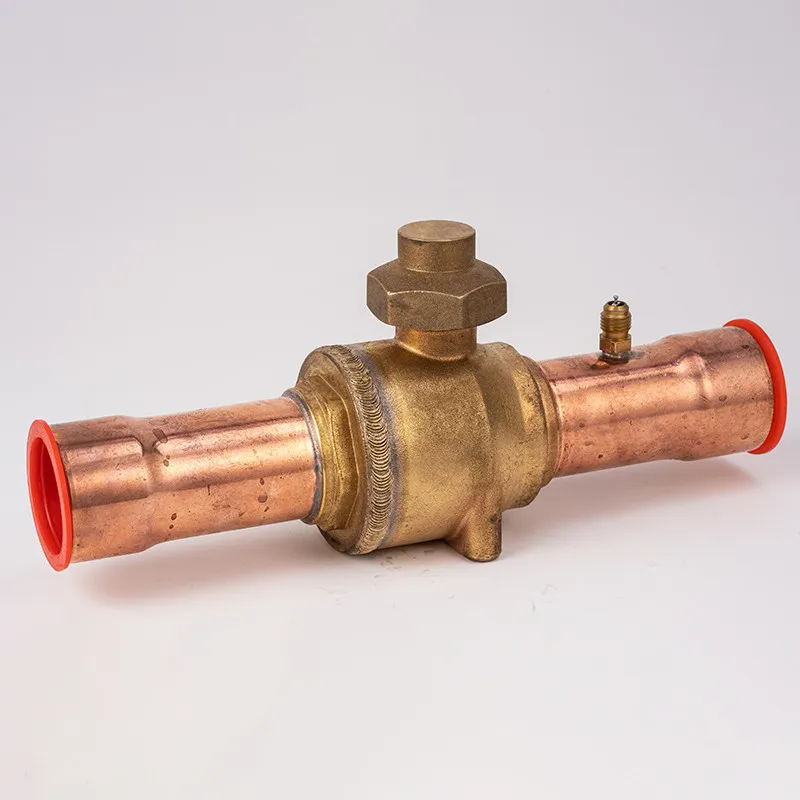Features of Ball Valves in Refrigeration Systems
2024-07-25
A ball valve is a key component in refrigeration systems, used to control the flow of refrigerant within the system. Its design allows for efficient and reliable operation, making it a popular choice for both commercial and industrial refrigeration applications. Here’s a detailed overview of its features, applications, advantages, and maintenance considerations:
Features of Ball Valves in Refrigeration Systems
1. Design:
- Spherical Closure Unit: The valve uses a spherical ball with a hole through its center. When the hole is aligned with the flow path, the valve is open, and when it is perpendicular, the valve is closed.
- Quarter-Turn Operation: The valve operates with a simple 90-degree turn of the handle, allowing for quick and easy control.
2. Material:
- Typically made from durable materials like brass, stainless steel, or plastic to withstand the corrosive nature of refrigerants and varying temperatures.
- Seals and seats are often made from Teflon or other resilient materials to ensure tight sealing and longevity.
3. Types:
- Two-Way Ball Valve: The most common type, with an inlet and an outlet port.
- Three-Way Ball Valve: Used to divert flow between two different paths or combine flows.
4. Sealing:
- Features tight sealing to prevent leaks and maintain system efficiency.
- Can handle high pressure and temperature fluctuations common in refrigeration systems.
5. Sizes:
- Available in various sizes to accommodate different piping diameters and flow requirements.
Applications of Ball Valves in Refrigeration Systems
1. Flow Control:
- Regulates the flow of refrigerant within the system, allowing for precise control over cooling processes.
- Commonly used in service lines, bypass lines, and main refrigerant lines.
2. Isolation:
- Provides isolation of specific sections of the system for maintenance or repair without needing to shut down the entire system.
3. System Protection:
- Helps protect the system by allowing for quick shut-off in case of leaks or other issues, preventing damage to components.
4. Pressure Regulation:
- Assists in managing and regulating system pressure to ensure optimal performance and safety.
Advantages
1. Reliability:
- Ball valves are known for their robust design and long service life, providing reliable performance even in demanding conditions.
2. Ease of Use:
- Simple quarter-turn operation makes them easy to use, even in emergency situations.
3. Low Maintenance:
- Requires minimal maintenance due to their durable construction and effective sealing mechanisms.
4. Versatility:
- Suitable for a wide range of refrigerants and compatible with various piping systems.
5. Compact Design:
- Their compact size allows for easy integration into complex refrigeration systems without taking up much space.
Maintenance Considerations
1. Regular Inspection:
- Periodically check for signs of wear, corrosion, or leaks.
- Inspect the seals and seats for any damage or degradation.
2. Operation Testing:
- Regularly operate the valve to ensure it moves freely and seals properly.
3. Lubrication:
- Some ball valves may require occasional lubrication to maintain smooth operation, depending on the manufacturer’s recommendations.
4. Replacement of Seals:
- Replace seals and seats as needed to prevent leaks and maintain efficiency.
5. Cleanliness:
- Keep the valve and surrounding area clean to prevent dirt and debris from affecting its operation.
Safety Considerations
1. Proper Installation:
- Ensure the valve is installed correctly according to the manufacturer’s guidelines to avoid leaks and ensure proper functioning.
2. Pressure Rating:
- Use ball valves with appropriate pressure ratings for the specific refrigeration system to avoid valve failure.
3. Material Compatibility:
- Select valves made from materials compatible with the refrigerant and other system components to prevent chemical reactions or corrosion.
Conclusion
Ball valves are crucial components in refrigeration systems, offering reliable flow control, isolation, and protection. Their ease of use, low maintenance requirements, and durability make them ideal for both commercial and industrial applications. Proper installation, regular maintenance, and adherence to safety guidelines ensure optimal performance and longevity of ball valves in refrigeration systems.



